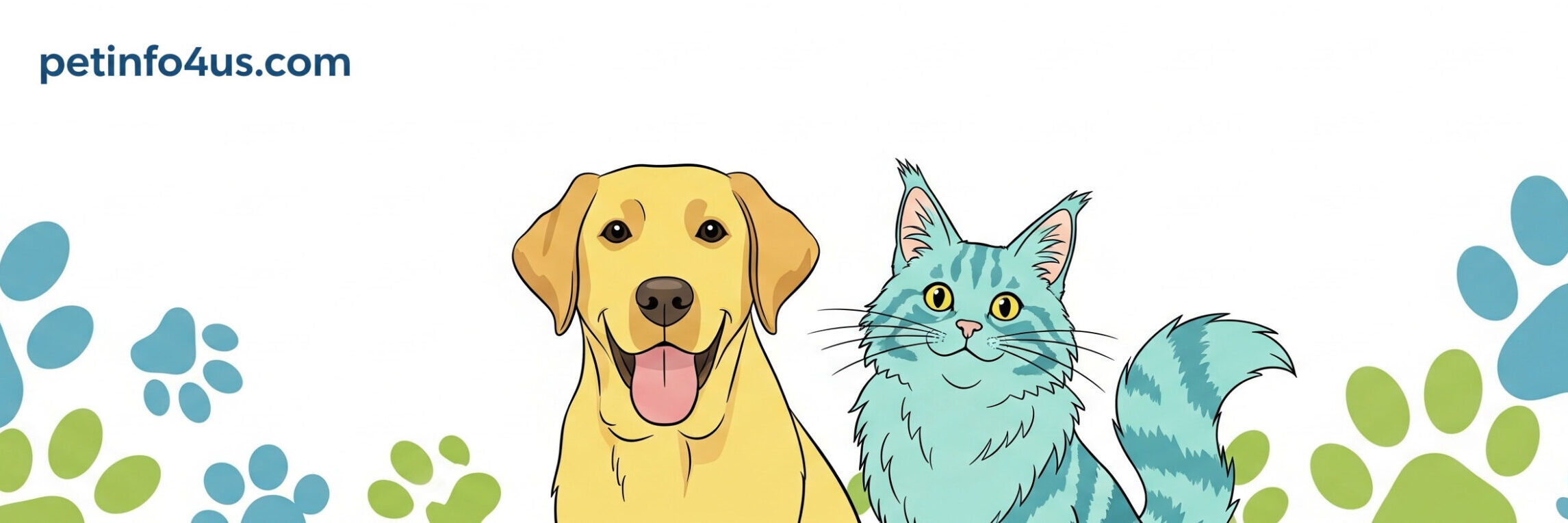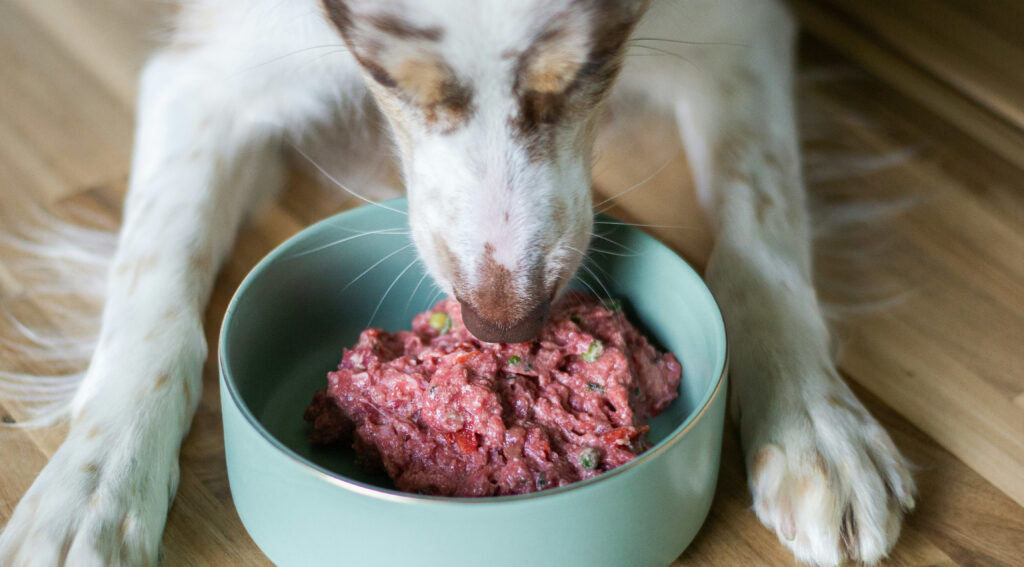A balanced look at pros, cons, and what really matters
Feeding your dog can feel surprisingly complicated these days, can’t it? I’ve been there myself with my two playful dogs, standing in the pet food aisle feeling completely overwhelmed by all the options. Should you go with raw feeding — the “natural” diet of meat, bones, and organs — or stick with convenient commercial kibble?
After researching this topic extensively (and testing different approaches with my own fur babies), I can tell you the short answer: There isn’t a one-size-fits-all solution. This guide will walk you through the facts, pros and cons, and key questions so you can decide what works for your dog, your lifestyle, and your vet’s advice.
(⚠️ Disclaimer: This article shares general information — always consult your veterinarian for your dog’s individual needs.)
What exactly is raw feeding?
Raw feeding usually means providing your dog with:
- Raw muscle meat
- Edible bones (raw, never cooked)
- Organ meats
- Sometimes fruits, veggies, eggs, or supplements
Common models:
- BARF diet (Biologically Appropriate Raw Food): includes veggies and fruit
- Prey model raw: tries to mimic whole prey animals (no carbs)
Some owners prepare meals at home; others buy commercial raw patties or freeze-dried raw. I’ve tried both approaches with my dogs, and each has its learning curve!
And what’s kibble?
Kibble is dry dog food, usually made from:
- Cooked meat meal or fresh meat
- Grains or legumes (rice, barley, peas, lentils)
- Added vitamins & minerals
It’s shelf-stable, budget-friendly, and widely available. This is what I started with when I first got my dogs, and honestly, good quality kibble can be a perfectly healthy choice.
Raw vs. Kibble: Side‑by‑side comparison
| Raw | Kibble | |
|---|---|---|
| Cost | Generally higher | More budget‑friendly |
| Convenience | Daily prep, freezer space | Scoop & serve |
| Shelf life | Short | Long |
| Bacterial risk | Higher | Lower |
| Customization | Easy | Harder |
| Dental benefit | Chewing bones | Crunchy texture may help |
| Scientific balance | Must do carefully | Usually complete & balanced |
Potential benefits of raw feeding
Many raw-feeding owners report:
- Shinier coat, healthier skin
- Smaller, firmer stools (this was definitely noticeable when I experimented with raw)
- Some dogs with food sensitivities do better on limited raw diets
- Dogs often love the taste
Raw can also make it easier to customize protein types and skip certain ingredients your dog can’t tolerate. I’ve seen this work beautifully for friends dealing with dogs who have specific allergies.
Potential downsides & risks of raw
Here’s where I had to really do my homework:
- Bacterial risk: Salmonella, E. coli, Listeria → can affect pets and humans in the household
- Nutritional imbalance: Dogs need precise calcium-to-phosphorus ratio, vitamins & trace minerals
- Bone risk: Choking, tooth fractures, GI blockages
- Cost & storage: Higher food bills; need freezer space and safe prep area
- Not recommended for puppies, seniors, or immune-compromised dogs without vet oversight
Studies show most home-prepared raw diets are nutritionally incomplete if not carefully formulated. This was actually what made me pause and really think about whether I was equipped to handle raw feeding properly.
Benefits of kibble
Let’s be honest about why kibble works for so many of us:
- Convenient: pour & go (perfect for busy mornings!)
- Balanced: reputable brands meet AAFCO nutrient standards
- Affordable: easier on the budget
- Dental: crunchy texture may help reduce tartar
- Easy to store & travel with
What does science say?
The research is pretty clear on a few key points:
- No large-scale studies prove raw is better for most healthy dogs
- Studies do show bacterial contamination risk with raw meat
- Balanced nutrition is key → raw or kibble can both work if diets meet nutrient requirements
- Some commercial raw brands are formulated & tested to be complete diets (better than homemade guesswork)
Hybrid / middle‑ground options
Not sure you want to commit to 100% raw? I totally get it. Here are some alternatives I’ve explored:
- Fresh-cooked homemade diets: cook meats/veggies → safer, easier to balance
- Mix kibble & raw toppers: adds taste & moisture (this is what I do sometimes!)
- Commercially balanced raw: safer than DIY raw
Always introduce new foods gradually to avoid stomach upset.
How to decide what’s best
Consider:
✅ Your dog’s age & health
✅ Food sensitivities & allergies
✅ Your time & budget
✅ Storage space & prep comfort
✅ Quality & reputation of food brands
✅ Vet or veterinary nutritionist guidance
FAQ
Can I mix raw and kibble?
Yes — many owners do, but transition slowly.
Are bones safe?
Raw, meaty bones can be safer than cooked bones, but still carry risks. Always supervise.
Is freeze‑dried raw safer?
It reduces bacteria risk, but not completely.
Do dogs get bored of kibble?
Some do. Safe fresh toppers or rotating proteins can help.
Talk to your vet (really!)
Your vet (or veterinary nutritionist) can:
- Review diet plans
- Recommend commercial brands tested for balance
- Help monitor your dog’s weight, coat & energy
✅ Conclusion
Raw vs. kibble isn’t a contest — it’s about what works for your dog and your family. A carefully balanced raw diet can be healthy, but so can a good-quality kibble.
After all my research and experimentation, I’ve learned that the most important things are complete nutrition, safe handling, and what keeps your dog healthy and happy. Some days that’s premium kibble, some days it’s a mix with fresh toppers, and that’s perfectly okay.
The best diet is the one that your dog thrives on, that you can maintain consistently, and that your vet approves of. Don’t let anyone make you feel guilty about your choice — we’re all just trying to give our dogs the best life possible!

